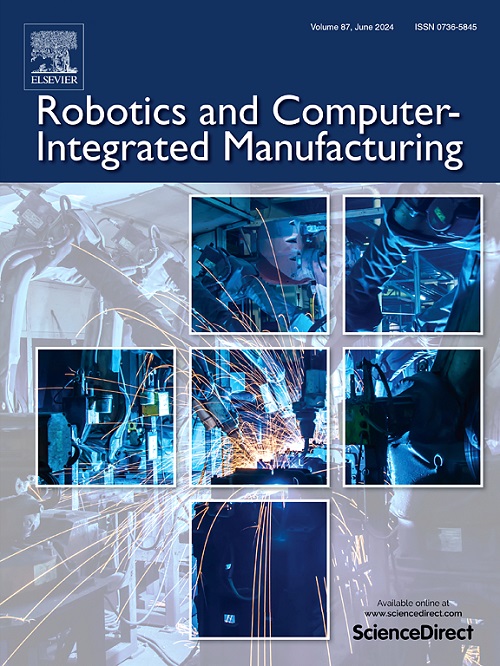3D curve weld seam path and posture planning based on line laser sensors
IF 9.1
1区 计算机科学
Q1 COMPUTER SCIENCE, INTERDISCIPLINARY APPLICATIONS
引用次数: 0
Abstract
The range of welding scenarios is expanding and becoming more complex in line with the development of manufacturing, which has led to increased demand for automatic and intelligent welding solutions. Line laser sensors are a crucial tool and technology in achieving intelligent welding. However, with the rise in the diversity of weld types and welding parts, the increasingly complex welded components pose challenges to point cloud construction. In contrast, the fixed posture of the welding torch in conventional digital welding makes it difficult to meet the welding needs of 3D curve weld seam. Therefore, this paper proposed a point cloud construction method based on robot pose. Firstly, the multi coordinate system transformation relationship was solved, and precise coordinate transformation between multi frame point clouds was achieved through coordinate transformation matrix, constructing a complex weld seam point cloud model. Furthermore, the point cloud was processed to extract weld seam information with the Ransac algorithm. Based on this, considering the characteristics of robot motion, the welding torch posture is divided into three components: deflection angle, elevation angle, and rotation angle, each of which is calculated separately to achieve welding posture planning. Experimental results have shown that the accuracy of the point cloud construction method proposed in this paper is better than 0.2mm, and the planning errors of the three posture angles are 0.75°, 1.2°, and 0.28°, which aligns well with the requirements of practical welding operations.
基于直线激光传感器的三维曲线焊缝路径与姿态规划
随着制造业的发展,焊接场景的范围正在扩大,也变得越来越复杂,这导致了对自动和智能焊接解决方案的需求增加。线激光传感器是实现智能焊接的重要工具和技术。然而,随着焊接类型和焊接部件的多样性的增加,焊接部件的日益复杂对点云的构建提出了挑战。相比之下,传统数字焊接中焊枪的固定姿态难以满足三维曲线焊缝的焊接需求。为此,本文提出了一种基于机器人姿态的点云构建方法。首先求解多坐标系变换关系,通过坐标变换矩阵实现多帧点云之间的精确坐标变换,构建复杂焊缝点云模型;在此基础上,利用Ransac算法对点云进行处理,提取焊缝信息。在此基础上,考虑机器人运动的特点,将焊枪姿态分为偏转角、仰角、旋转角三个分量,分别进行计算,实现焊接姿态规划。实验结果表明,本文提出的点云构建方法的精度优于0.2mm,三个姿态角的规划误差分别为0.75°、1.2°和0.28°,符合实际焊接作业的要求。
本文章由计算机程序翻译,如有差异,请以英文原文为准。
求助全文
约1分钟内获得全文
求助全文
来源期刊
CiteScore
24.10
自引率
13.50%
发文量
160
审稿时长
50 days
期刊介绍:
The journal, Robotics and Computer-Integrated Manufacturing, focuses on sharing research applications that contribute to the development of new or enhanced robotics, manufacturing technologies, and innovative manufacturing strategies that are relevant to industry. Papers that combine theory and experimental validation are preferred, while review papers on current robotics and manufacturing issues are also considered. However, papers on traditional machining processes, modeling and simulation, supply chain management, and resource optimization are generally not within the scope of the journal, as there are more appropriate journals for these topics. Similarly, papers that are overly theoretical or mathematical will be directed to other suitable journals. The journal welcomes original papers in areas such as industrial robotics, human-robot collaboration in manufacturing, cloud-based manufacturing, cyber-physical production systems, big data analytics in manufacturing, smart mechatronics, machine learning, adaptive and sustainable manufacturing, and other fields involving unique manufacturing technologies.

 求助内容:
求助内容: 应助结果提醒方式:
应助结果提醒方式:


